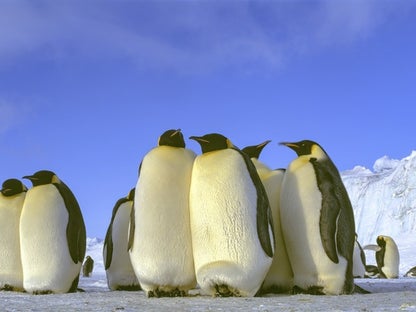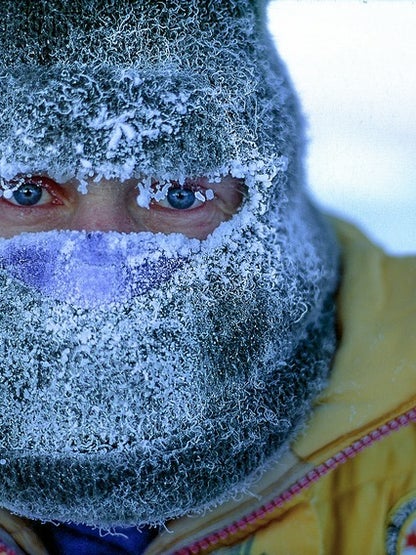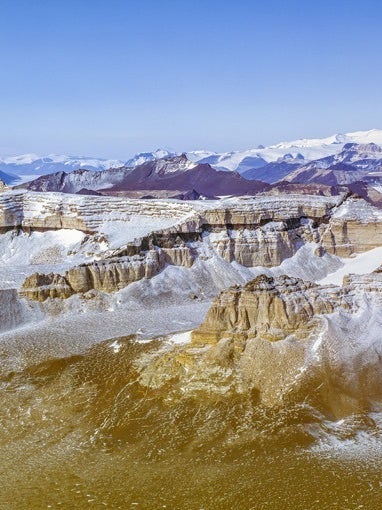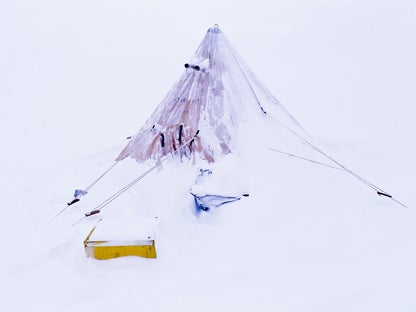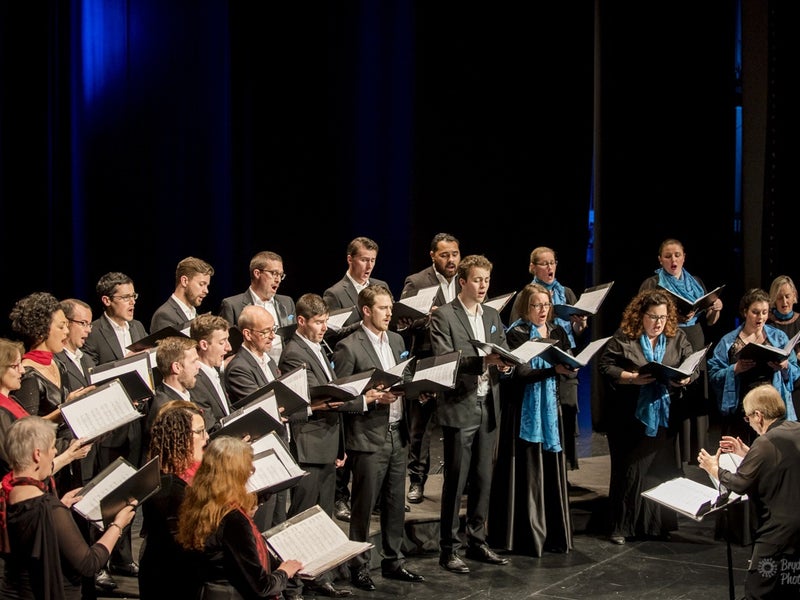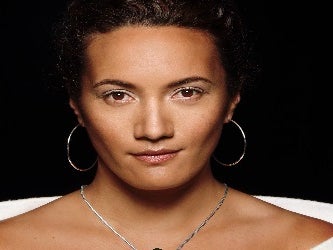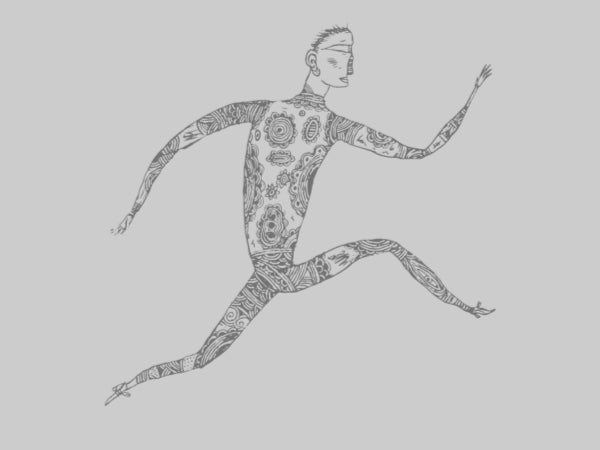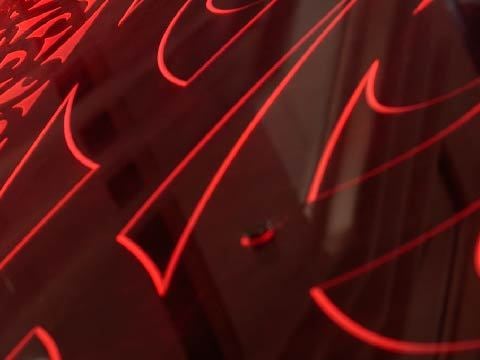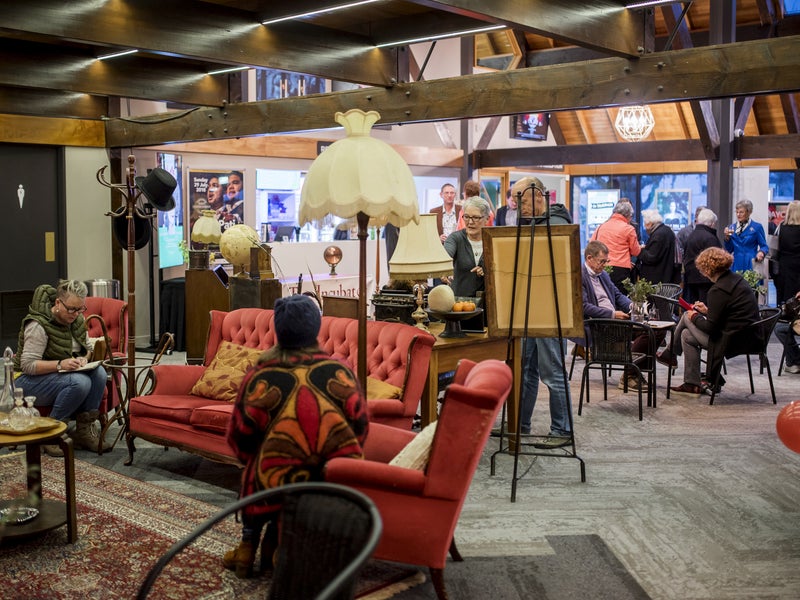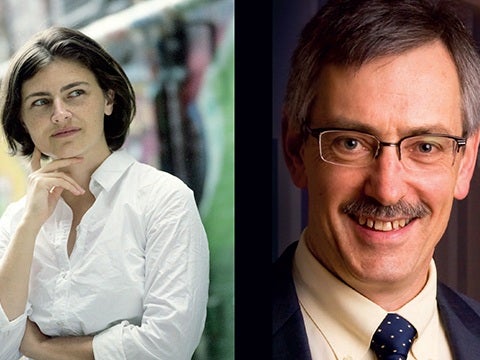Tauranga photographer Kim Westerskov shares some of his Antarctic experiences as a response to this extract from the poem ‘Hoosh’ by Bill Manhire. (Hoosh is a stew made from limited ingredients used by polar explorers.Read more here.)
From Hoosh
By Bill Manhire
Whiteout. A cairn in a sea of sastrugi.
The blizzard repeats itself
every twelve minutes
though it is mostly silence
making your ears ring,
making you move along whenever
you hear the tin dogs yelping
*
while Mawson ties
the soles of his feet
back on
*
and we
hop on the Snowmaster,
riding through the darkness
and the wind and the song
to Butter Point, Cape Chocolate,
back to the world of questions
and the welcome home – the voice,
the hand-grip … it chokes me,
it cannot be uttered.
_______________________
Bill Manhire’s first collection of poems was published in 1972. He has won the New Zealand Book Award for Poetry five times and was the inaugural Poet Laureate in 1997, the same year he became one of Antarctica NZ's inaugural arts fellows. Bill also wrote the poem ‘Erebus Voices’ for Sir Edmund Hillary to read in 2004 at the commemorative service at Scott Base to mark the 25th anniversary of the Erebus air crash.
The founding director on the International Institure of Modern Letters at Victoria University (and Emeritus Professor since 2012), Bill has also collaborated with composer Norman Meehan and singer Hannah Griffin on a range of musical projects which include ‘Buddhist Rain’, ‘These Rough Notes’ and ‘Making Baby Float’. The trio performed at the 2013 Tauranga Arts Festival.
_______________________
Spending a night with the ghosts of Robert Falcon Scott’s ill-fated 1910-13 Antarctica expedition was an unusual and slightly unsettling experience for award-winning Tauranga photographer Kim Westerskov.
“You can’t do it now but on one visit I dragged a mattress and couple of sleeping bags into Scott’s Terra Nova hut at Cape Evans, and slept there on the floor. It was a strange feeling. It felt like some part of them was hanging around. You didn’t have to believe in ghosts to feel it. The others I was with felt it too.”
Five died on the expedition, including Scott, and Kim believes their bodies would have been gradually encased in ice and, over time, moved out to sea.
He also spent a night in the hut, a bit further up the coast, used by Ernest Shackleton’s team during the epic 1914-16 expedition that saw their ship crushed by ice and sink, and Shackleton and five others navigate a small boat across the Atlantic Ocean to South Georgia for help.
“It’s much smaller,” Kim says of that hut, “and more practical. Shackleton’s hut feels more cheerful and optimistic.
“With hindsight, there’s a lot you can throw at Scott about getting things wrong, but he was essentially having to make things up as he went, as well as striking unusually severe weather. What he didn’t do, and [Norwegian explorer and first to the Pole Roald] Amundsen did, was spend time training for the conditions before he reached Antarctica.”
Kim says he “feels” his way into this poem through the images, knowing both Butter Point, having spent one cold night in the small, unheated hut there, and Cape Chocolate. Named by Scott’s party, the former was a food depot, including a great deal of butter, while the latter probably earned its name for the colour of the moraine material deposited there.
“For me, the image of [Australian explorer Douglas] Mawson was particularly strong. Before I went I had to learn how to prusik, which is a method of extricating yourself from a crevasse when roped to others. Mawson, who really did strap the soles back to his feet, had to pull himself out of a crevasse when he was on his own and just about died in the attempt. Mawson has largely been in the shadow of others but his Antarctica story is just as good – or as horrifying – as anyone else’s.”
Kim made five visits to Antarctica between 1982 and 1993 with his first stay of 4 months spent working for the New Zealand Antarctic programme. “Two of my five visits were as both photographer and journalist, and the last three purely as a photographer – getting photos for the Antarctic Visitor Centre at Christchurch Airport,” he says. “Apart from that 4-month trip, the others were all 2 months at a time.”
What does he remember most? The cold, obviously, although he was interested to find that both he and his cameras could tolerate being outside for several hours at -30°C, but that at -50°C, after just half an hour he was losing interest rapidly. In those pre-digital days, Kim also discovered that film could become unpredictable – including not winding through properly, while any frozen microscopic drops of moisture on the roll could bloom into a problem that wasn’t obvious until processed.
“Everything takes an awful long time to achieve in Antarctica – having a meal, going to the loo, getting anywhere. About three times as long as it would here. But the slowing down can be a blessing. Everything becomes pregnant with possibilities, for a photographer anyway.”
Kim, who says it might be something to do with his “100% Viking DNA”, enjoyed the simple landscapes and the subtle colour palette of Antarctica which are versions of blue-grey-white and brown-black. “If you’re there in spring or when the sun is low you can get warmer colours.”
His strongest impressions of the continent are its simplicity, silence, its vastness – the distances, he says, are impossible to convey with photography. “On a clear day you can see for hundreds of miles. What looks like a day’s hike could be a week’s walk.”
Returning from his first trip Kim was accompanied by a man who’d been on a Search and Rescue team. “Viv and I had to nurse him back to reality, he was just lost for a while. There’s suddenly so much of everything – colour, smells, people, noise, grass, junk food. I was a bit struck by it but this guy, who had been so clinical and tough down there, didn’t cope at all.”
See more of Kim’s work on his website.


